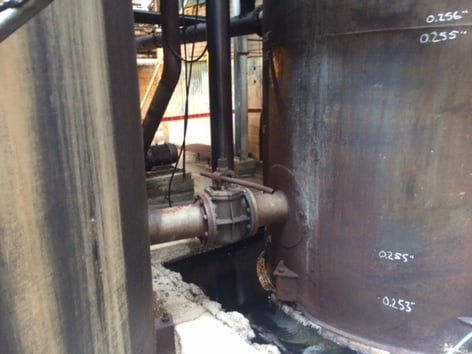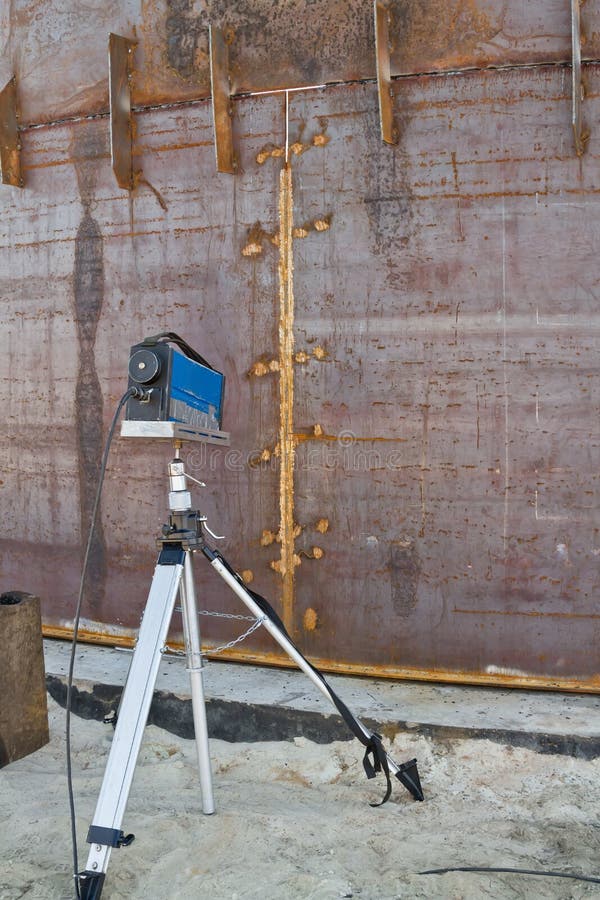Tank Welding Inspection: Making Certain Long-Term Longevity and Safety And Security
Tank Welding Inspection: Making Certain Long-Term Longevity and Safety And Security
Blog Article
Comprehensive Guide to Effective Tank Welding Evaluation Techniques and Finest Practices for Quality Control
In the realm of container welding, extensive inspection strategies are vital for safeguarding architectural stability and ensuring conformity with industry guidelines. As we explore these crucial elements, it becomes clear that a positive inspection approach is not just valuable, however necessary for operational success in atmospheres dealing with harmful products.
Significance of Tank Welding Inspection

Tank welding assessment offers as a preventative measure, identifying prospective issues such as cracks, porosity, or incorrect joint infiltration before they intensify right into major issues. Routine inspections not only conform with sector regulations and criteria yet likewise boost the long life of the tanks, decreasing the requirement for pricey repair work or substitutes.

Aesthetic Examination Techniques
Employing systematic visual inspection techniques is crucial for examining the top quality and honesty of bonded joints in containers. This technique functions as the very first line of defense in identifying potential defects such as cracks, damages, and not enough infiltration. The examiner ought to come close to the job with a keen eye, utilizing suitable tools like multiplying glasses, flashlights, and mirrors to boost exposure.
During the inspection process, the assessor must examine the weld profile, ensuring it sticks to defined criteria and standards (Tank Welding Inspection). This includes taking a look at the grain width, height, and fusion with the base product. Inspectors should additionally pay very close attention to the bordering areas for indicators of thermal distortion or contamination that might affect the weld's performance
Paperwork of findings is vital; examiners ought to tape any kind of anomalies, classifying them by extent for more examination. This methodical approach not just aids in prompt flaw identification however also contributes to long-term high quality assurance by making certain compliance with sector requirements. Normal training and calibration of visual examination methods further improve the reliability of evaluations, ultimately resulting in much safer and a lot more durable container frameworks.
Non-Destructive Testing Techniques
Non-destructive testing (NDT) methods are regularly used in tank welding evaluations to assess the honesty of welded joints without jeopardizing their structural integrity. These techniques are crucial for recognizing defects such as splits, gaps, and additions that might bring about tragic failings if left unnoticed.
Usual NDT approaches consist of ultrasonic testing (UT), which uses high-frequency sound waves to discover internal problems; radiographic testing (RT), employing X-rays or gamma rays to imagine weld structures; and magnetic bit testing (MT), which reveals surface area and near-surface gaps in ferromagnetic materials (Tank Welding Inspection). Fluid penetrant screening (PT) is additionally commonly made use of, with the ability of detecting surface-breaking problems by applying a fluorescent or shade comparison color
Each NDT approach has its particular applications and benefits, making it crucial for examiners to select the suitable method based on the material and the sort of weld being evaluated. The combination of these NDT techniques into the evaluation procedure improves the general quality control structure, ensuring that bonded tanks fulfill safety and security and performance standards. Inevitably, NDT plays an essential duty in preserving the integrity and longevity of tank structures in different industrial applications.

Documents and Reporting
Guaranteeing comprehensive documentation and reporting during container welding assessments is crucial for maintaining compliance with industry standards and facilitating effective interaction among stakeholders. Appropriate paperwork works as a detailed document of inspection activities, findings, and any kind of restorative actions taken throughout the welding procedure. This info is important not just for quality site control but likewise for audits and regulative testimonials.

A well-structured examination record need to include details such as the date of assessment, names of examiners, welding treatments utilized, materials made use of, and any inconsistencies from developed standards. Additionally, photos and diagrams can boost the clarity of the report, supplying aesthetic context to the findings. It is likewise crucial to document any kind of non-conformities together with their resolution, making sure that all stakeholders are educated of potential risks and the actions required to mitigate them.
Furthermore, preserving a centralized database for all inspection reports enables simple access and review, cultivating a society of openness and accountability. By prioritizing thorough documents and reporting, organizations can not just support quality assurance Look At This but likewise enhance their track record within the sector, inevitably bring about enhanced security and operational performance.
Continuous Renovation Practices
Continual renovation techniques are crucial for boosting the top quality and effectiveness of storage tank welding evaluations. One efficient strategy involves normal training and upskilling of examination workers to stay abreast of the newest welding technologies and criteria.
Moreover, making use of visite site data-driven evaluation enables organizations to track examination outcomes, determine trends, and determine areas for improvement. Employing tools such as root reason analysis can assist in recognizing the underlying concerns leading to issues, making it possible for targeted interventions. In addition, getting feedback from inspection teams and stakeholders produces a joint atmosphere that motivates innovative remedies.
Integrating advanced modern technologies, such as automated examination systems and real-time tracking, can considerably boost the accuracy and rate of evaluations. Normal audits of the evaluation procedures likewise add to a culture of liability and constant improvement. Inevitably, these continual improvement techniques not only boost the quality of container welding evaluations yet also add to total operational quality and consumer fulfillment.
Verdict
Finally, reliable tank welding examination is critical for making sure the structural honesty and safety of storage systems, especially those taking care of dangerous products. Using a combination of visual assessment strategies and non-destructive screening methods assists in the very early recognition of defects, thus keeping conformity with industry standards. Furthermore, durable paperwork and a dedication to continual improvement enhance high quality guarantee methods. Inevitably, these actions add significantly to operational excellence and the prevention of prospective security dangers.
Report this page